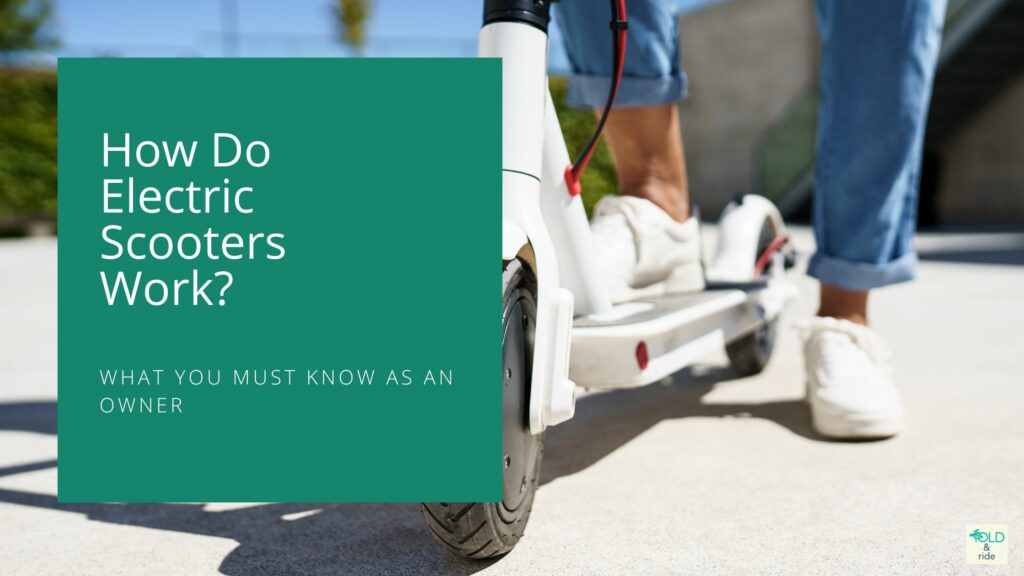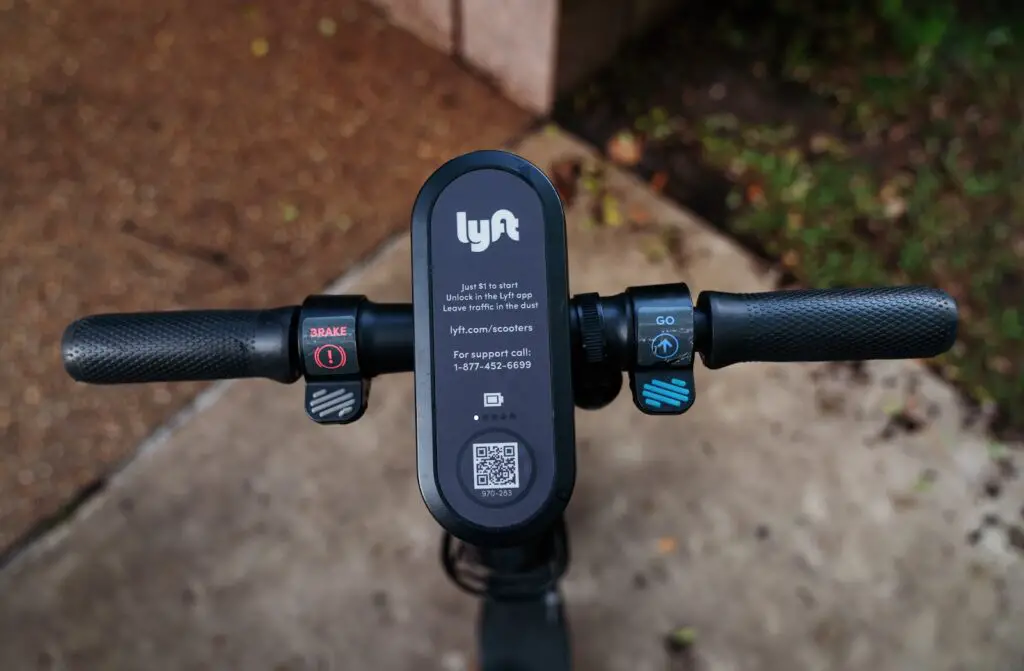As the owner of an electric scooter, it might be useful to have a bit of an idea of how they work.

As an Amazon affiliate, we earn from qualifying purchases.
Scooters are simple vehicles that are powered by a charged battery that in turn drives a motor to propel the scooter wheels forward. These components are usually housed in aluminum or carbon fiber frames. The tires can be solid rubber, but air-filled tires are more common.
Continue reading to find out more about how scooters work.
How Do Electric Scooters Work?

Here is a simple step-by-step overview of how scooters work.
- The rider uses the throttle in the handlebar to choose an action.
- Electric signals travel through wires down to the controller inside the frame’s front stem.
- The controller instructs the battery, lower down inside or outside of the scooter to release energy,
- The motor uses the battery energy to propel the scooter wheels.
Parts Of An Electric Scooter

The five main components of a scooter are the throttle, display screen, brake lever, and front and back wheel suspension.
Most scooters also have the following components:
- Handlebar with throttle and brake controls
- Frame stem that contains the scooter controller
- Base hinge to fold up the scooter
- Charging port to plug the scooter in to charge the battery
- Deck platform where the rider stands
- Fenders on both rear and front wheels to keep grime away
- A rear light
- Two wheels
The Frame

The scooter’s frame houses or integrates with all other scooter components. Frames are light, but strong and generally made of aluminum alloy or carbon fiber, with casings and linings made out of silicone or plastic.
The frame is a T-shape with a front pipe-like stem that is attached to the standing platform. There is usually a hinge at the stem juncture to the platform that allows the scooter to fold in half.
The Display Screen
Electric scooters have a display screen that connects to the battery, motor, and also the throttle on the handlebar. It is an LED screen located in the center of the handlebar, or on the left handlebar opposite the throttle controls on the right.
The rider issues a command to the controller that tells the components of the scooter how to behave.
The Controller
The controller is located in the stem pipe of the scooter and connects all that is working together with wires: acceleration and brake controls, the battery, and the motor.
The controller’s actions are informed by signals from the throttle, usually located on the scooter’s right handlebar.
The Throttle
The throttle is the scooter’s “ignition” that turns on the motor. It is usually located on the right handlebar and needs only a quick twist to send a signal to the controller to start the machine.
The throttle is also used to stop bikes that have electric brakes.
The Battery
The battery powers the electric scooter. The battery’s charge and voltage dictate how fast the scooter can go, as well as the maximum distance it can travel on a single charge.
The battery is connected to the scooter’s motor. Most electric scooters come with either Samsung or LG lithium-ion batteries.
The Motor
The quality and wattage of the scooter battery determine several aspects of its performance, including its torque, maximum speed, and ability to climb hills. Scooters generally have a wattage between 200 and 600 watts.
The ultimate speed of a scooter is usually determined by wattage. Generally, a scooter will have a 1 km/h speed for every 20 watts of motor power. So a motor with a wattage of 300 will probably have an optimum speed of about 15 km/hr.
Some scooters have two motors, called hub motors that are built into the wheels. Older models may have a motor beneath the rider deck.
All scooters are operated by batteries that provide a direct current (DC) to the motor. There are two types of motors that can be housed in a scooter: brushed and brushless.
DC Brushed Motors
Brushed motors are generated by a magnetic field created by one larger magnet inside of a cylinder encasing a smaller magnet. When the motor is turned on, the magnets move, causing the cylinders to turn over and generate power.
DC Brushless Motors
A brushless motor contains two immovable magnets, but when the motor is turned on, the two cylinders move to generate power. Brushless motors are common in newer models.
Brakes

Scooter brakes can be electric, hydraulic, or mechanical. The rear wheel or both wheels can have brake pads.
- Electric brakes send a signal to the controller to stop the vehicle.
- Hydraulic brakes are usually operated by a lever on the left scooter handle, activating the front, back, or both disk brakes.
- Mechanical brakes can be described as your foot placed against the rear fender.
Scooter brakes are usually controlled by the display panel or a brake lever on the left handlebar. Just the rear wheel or both wheels can have brakes.
Wheels
Scooters can have either solid wheels or air-filled tires. The advantage of solid wheels is that they never go flat, but they do offer a bumpier ride. Air-filled tires do burst, but they provide a cushioned ride.
The wider the wheels, the more they will hug the road, which helps to prevent accidents.
Lights
Most eclectic scooters come with an integrated front headlight and rear brake light, operated by the inbuilt battery.
Final Thoughts
You don’t have to be mechanically inclined to understand how a scooter works, especially if it has simple hydraulic brakes. On most models, the LED display will tell you everything that happens with your scooter while it is in operation.
If you are buying an electric scooter, be sure to pick one with a warranty on parts and repairs in case you need someone with expertise to fix it.
